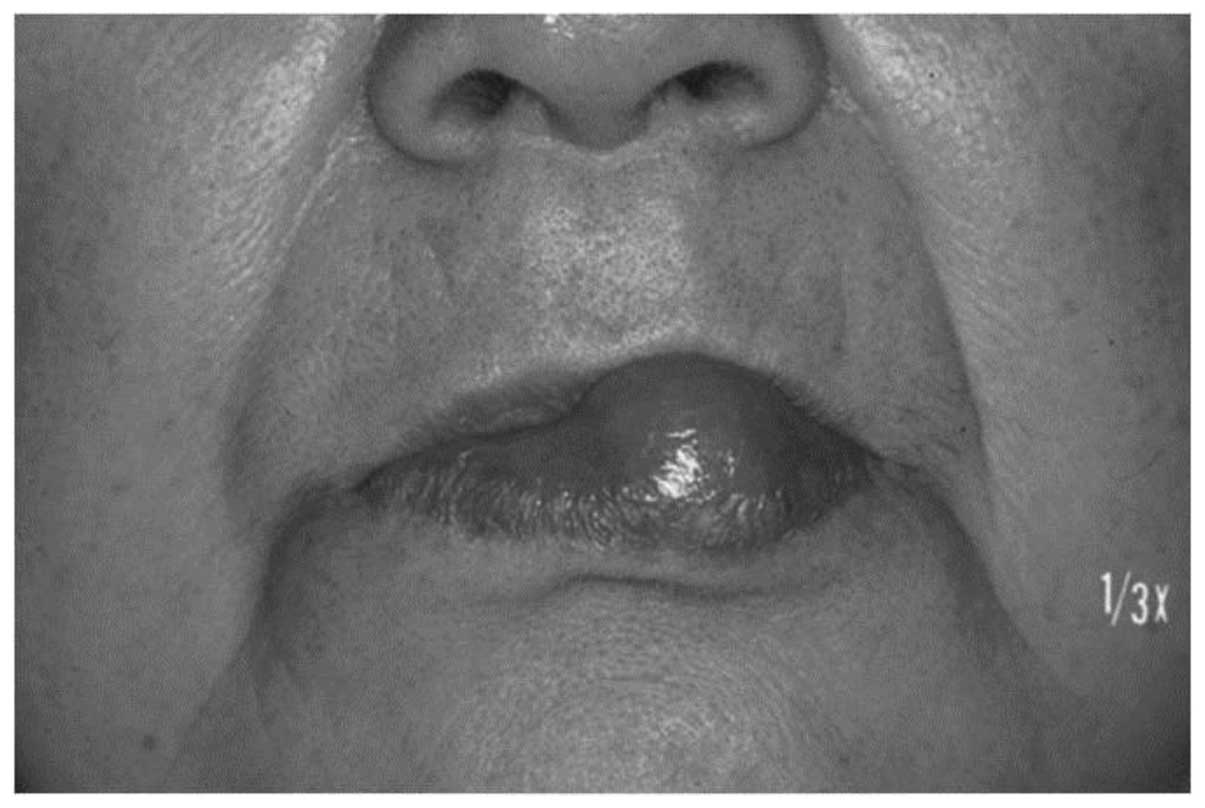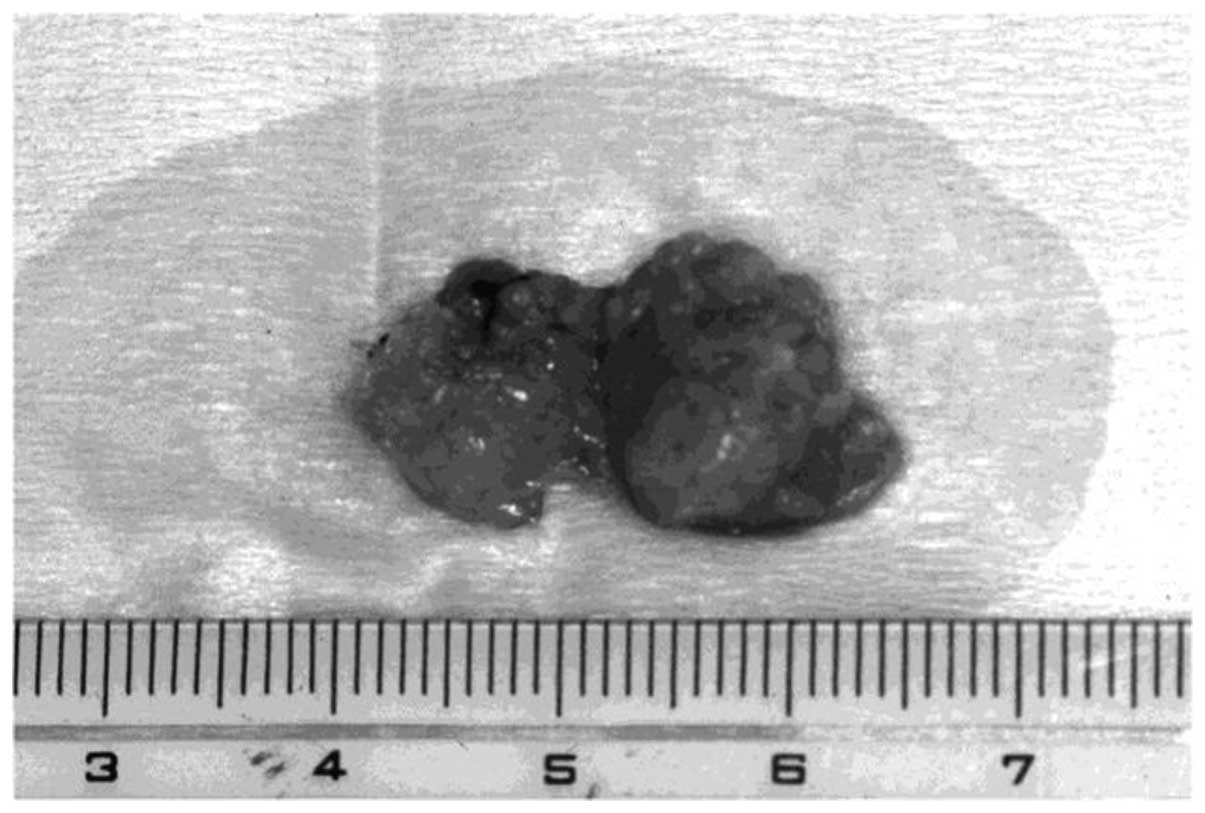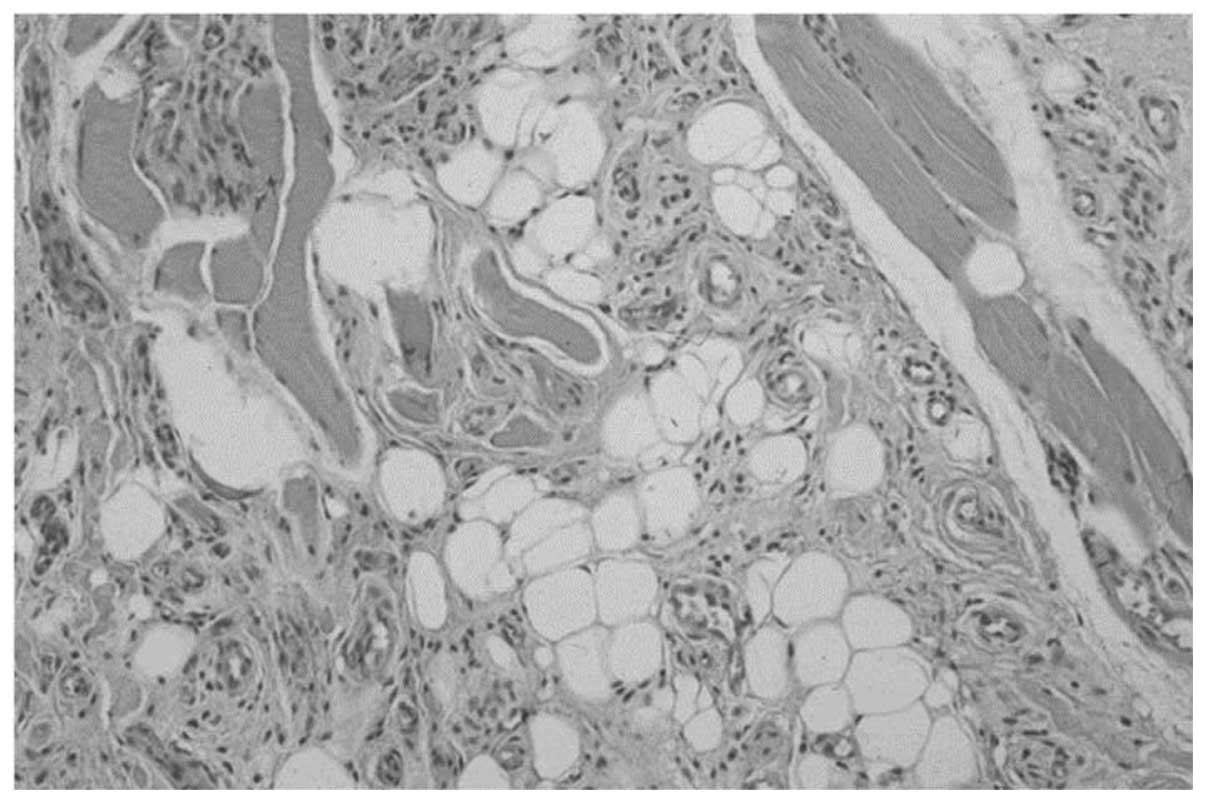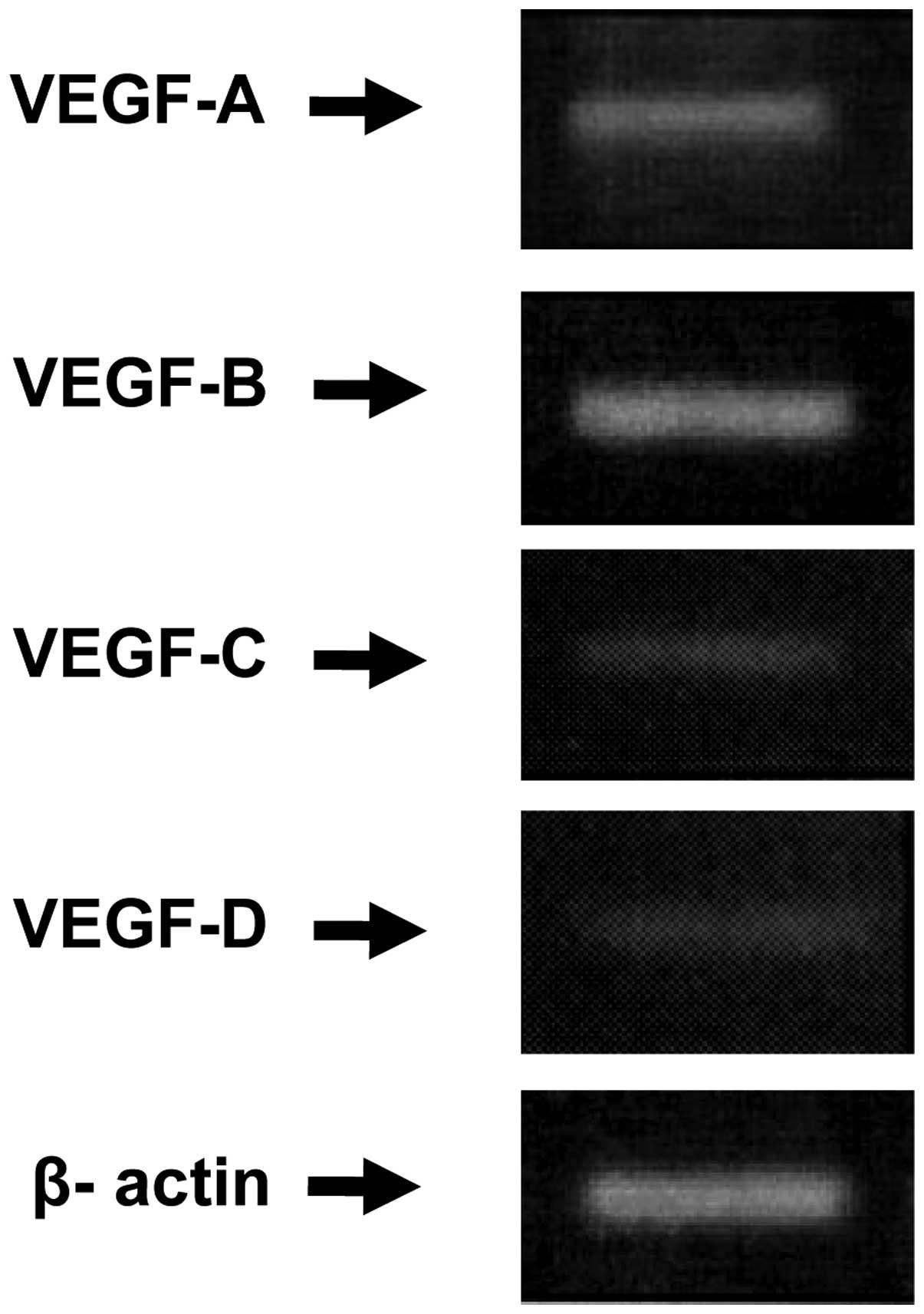Infiltrating angiolipoma of the lower lip: A case report and literature review
- Authors:
- Yuichi Ohnishi
- Masahiro Watanabe
- Tomoko Fujii
- Hiroki Yasui
- Hirohito Kubo
- Kenji Kakudo
View Affiliations
Affiliations: Second Department of Oral and Maxillofacial Surgery, Osaka Dental University, Chuo‑ku, Osaka 540‑0008, Japan
- Published online on: November 25, 2014 https://doi.org/10.3892/ol.2014.2737
-
Pages:
833-836
Metrics: Total
Views: 0 (Spandidos Publications: | PMC Statistics: )
Metrics: Total PDF Downloads: 0 (Spandidos Publications: | PMC Statistics: )
This article is mentioned in:
Abstract
Infiltrating angiolipoma (IAL) is a rare lesion and is a clinicopathological variant of angiolipoma. IAL occurs most commonly in the trunk and extremities, it is rarely found in the head and neck regions and extremely rare in the oral cavity. This study presents the case of a 74‑year‑old female with IAL of the lower lip. To the best of our knowledge, this is the first case of IAL arising in the lower lip to be reported. Microscopically, IAL was unencapsulated and mature lipocytes were separated by a branching network of proliferating small vessels that infiltrated the adjacent tissues. Therefore, complete excision was difficult to perform. Magnetic resonance imaging has been reported to be valuable in determining the extent of the tumor and asserting a preoperative diagnosis. According to previous studies, the recurrence rate of IAL following surgical extirpation is 35‑50%. Furthermore, the levels of mRNA expression of the vascular endothelial growth factor (VEGF) family members in the tumor were investigated. VEGF‑A and ‑B expression were detected, however, VEGF‑C and ‑D were expressed at extremely low levels. Excisional biopsy was performed under local anesthesia. During four years of follow‑up, no evidence of tumor recurrence had been identified. An operating microscope may be utilized for the total removal of an IAL to minimize damage to normal tissues. This report indicates that mast cell-derived VEGF may be responsible for the enhanced vascularity in the tumor. We would therefore consider careful extirpation with no wide safety margin to be the procedure of choice, except when the tumor invades irregularly into the muscles.
View References
|
1
|
Weiss SW and Goldblum JR: Benign
lipomatius tumors. Enzinger and Weiss’s Soft Tissue Tumors. 4th
edition. Mosby; St Louis, MO: pp. 571–639. 2001
|
|
2
|
Gozalez-Crussi F, Enneking WF and Arean
VM: Infiltrating angiolipoma. J Bone Joint Surg. 48:1111–1124.
1966.
|
|
3
|
Dalambiras S, Tilaveridis I, Iordanidis S,
Zaraboukas T and Epivatianos A: Infiltrating angiolipoma of a the
oral cavity: report of a case and literature review. J Oral
Maxillofac Surg. 68:681–683. 2010. View Article : Google Scholar
|
|
4
|
Hamakawa H, Hino H, Sumida T and Tanioka
H: Infiltrating angiolipoma of the cheek: a case report and a
review of the literature. J Oral Maxillofac Surg. 58:674–677. 2000.
View Article : Google Scholar : PubMed/NCBI
|
|
5
|
Regan JM, Bickel WH and Brodes AC:
Infiltrating lipomas of the extremities. Surg Gynecol Obstet.
54:871946.
|
|
6
|
Kindblom LG, Angervall L, Stener B and
Wickbom I: Intermusclar and intramusclar lipomas and hidernomas: A
clinical, roentgenologic, histlogic and prognostic study of 46
cases. Cancer. 33:754–762. 1974. View Article : Google Scholar : PubMed/NCBI
|
|
7
|
Dionne GP and Seemayer TA: Infiltrating
lipomas and angiolipomas revisited. Cancer. 33:732–738. 1974.
View Article : Google Scholar : PubMed/NCBI
|
|
8
|
Lin JJ and Lin F: Two entities in
angiolipoma: A study of 459 cases of lipoma with review of
literature on infiltrating angiolipoma. Cancer. 34:720–727. 1974.
View Article : Google Scholar : PubMed/NCBI
|
|
9
|
Enzinger FM and Weiss SW: Soft Tissue
Tumors. St Louis, MO: Mosby; pp. 301–345. 1988
|
|
10
|
Lin SC, Wang TY and Hahn LJ: Angiolipoma
of the tongue: Report of a case. Ann Dent. 48:37–38.
1989.PubMed/NCBI
|
|
11
|
Sugiura J, Fujiwara K, Kurahashi I and
Kimura Y: Infiltrating angiolipoma of the mucolabial fold: A case
report and review of the literature. J Oral Maxillofac Surg.
57:446–448. 1999. View Article : Google Scholar : PubMed/NCBI
|
|
12
|
Matsuoka Y, Kurose K, Nakagawa O and
Katsuyama J: Magnetic resonance imaging of infiltrating angiolipoma
of the neck. Surg Neurol. 29:62–66. 1988. View Article : Google Scholar : PubMed/NCBI
|
|
13
|
Chew FS, Hudson TM and Hawkins IF:
Radiology of infiltrating angiolipoma. AJR Am J Roentgenol.
135:781–787. 1980. View Article : Google Scholar : PubMed/NCBI
|
|
14
|
Austin RM, Mack GR, Townsend CM and Lack
EE: Infiltrating (intramuscular) lipoma and angiolipomas. A
clinicopathologic study of six cases. Arch Surg. 115:281–284. 1980.
View Article : Google Scholar : PubMed/NCBI
|
|
15
|
Ida-Yoncmochi H, Swelam W, Saito C and
Saku T: Angiolipoma of the buccal mucosa: a possible role of mast
cell-derived VEGF in its enhanced vascularity. J Oral Pathol Med.
34:59–61. 2005. View Article : Google Scholar
|
|
16
|
Stimpson N: Infiltrating angiolipoma of
skeletal muscle. Br J Surg. 58:464–466. 1971. View Article : Google Scholar : PubMed/NCBI
|













